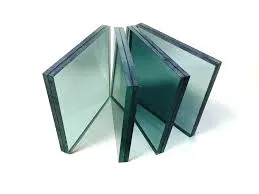Tempered Glass Production A Comprehensive Overview
Tempered glass, often referred to as toughened glass, is a type of safety glass that has been processed through controlled thermal or chemical treatments to increase its strength compared to standard glass. The production of tempered glass involves meticulous procedures that ensure its durability, thermal resistance, and safety features, making it an essential material in various applications ranging from architectural structures to automotive glazing.
Tempered Glass Production A Comprehensive Overview
Tempering involves heating the glass to extreme temperatures, generally between 600 to 700 degrees Celsius. This is done in a specialized furnace where the glass is uniformly heated to ensure even strength. After reaching the desired temperature, the glass is rapidly cooled using a method known as quenching. This process involves blowing cool air onto the glass, which causes the outer surface to cool and harden more quickly than the inner material. The rapid cooling creates compressive stresses on the surface and tensile stresses within, significantly enhancing the glass's strength and making it five to ten times stronger than standard glass.
tempered glass production
One of the key benefits of tempered glass is its safety feature. In the event of breakage, tempered glass shatters into small, blunt pieces rather than sharp shards, greatly reducing the risk of injury. This property makes it ideal for use in environments where safety is paramount, such as in shower doors, glass railings, and building facades.
Another advantage of tempered glass is its ability to withstand thermal stress. It can endure substantial temperature fluctuations without breaking, making it suitable for applications such as oven doors and glass panels near heat sources. Furthermore, the aesthetic qualities of tempered glass, including its clarity and finish, enhance the overall design of modern architecture.
In recent years, the demand for tempered glass has seen a significant rise, spurred by advancements in technology and an increase in construction activities worldwide. Manufacturers are continuously innovating to improve the efficiency and quality of the tempering process, incorporating automated systems and quality control measures to ensure that the final product meets industry standards.
In conclusion, tempered glass production is a sophisticated process that combines science and technology to create a safe, durable, and aesthetically pleasing material. With its remarkable strength and safety features, tempered glass continues to play a vital role in various sectors, demonstrating its importance in today’s modern world.
 Afrikaans
Afrikaans  Albanian
Albanian  Amharic
Amharic  Arabic
Arabic  Armenian
Armenian  Azerbaijani
Azerbaijani  Basque
Basque  Belarusian
Belarusian  Bengali
Bengali  Bosnian
Bosnian  Bulgarian
Bulgarian  Catalan
Catalan  Cebuano
Cebuano  Corsican
Corsican  Croatian
Croatian  Czech
Czech  Danish
Danish  Dutch
Dutch  English
English  Esperanto
Esperanto  Estonian
Estonian  Finnish
Finnish  French
French  Frisian
Frisian  Galician
Galician  Georgian
Georgian  German
German  Greek
Greek  Gujarati
Gujarati  Haitian Creole
Haitian Creole  hausa
hausa  hawaiian
hawaiian  Hebrew
Hebrew  Hindi
Hindi  Miao
Miao  Hungarian
Hungarian  Icelandic
Icelandic  igbo
igbo  Indonesian
Indonesian  irish
irish  Italian
Italian  Japanese
Japanese  Javanese
Javanese  Kannada
Kannada  kazakh
kazakh  Khmer
Khmer  Rwandese
Rwandese  Korean
Korean  Kurdish
Kurdish  Kyrgyz
Kyrgyz  Lao
Lao  Latin
Latin  Latvian
Latvian  Lithuanian
Lithuanian  Luxembourgish
Luxembourgish  Macedonian
Macedonian  Malgashi
Malgashi  Malay
Malay  Malayalam
Malayalam  Maltese
Maltese  Maori
Maori  Marathi
Marathi  Mongolian
Mongolian  Myanmar
Myanmar  Nepali
Nepali  Norwegian
Norwegian  Norwegian
Norwegian  Occitan
Occitan  Pashto
Pashto  Persian
Persian  Polish
Polish  Portuguese
Portuguese  Punjabi
Punjabi  Romanian
Romanian  Russian
Russian  Samoan
Samoan  Scottish Gaelic
Scottish Gaelic  Serbian
Serbian  Sesotho
Sesotho  Shona
Shona  Sindhi
Sindhi  Sinhala
Sinhala  Slovak
Slovak  Slovenian
Slovenian  Somali
Somali  Spanish
Spanish  Sundanese
Sundanese  Swahili
Swahili  Swedish
Swedish  Tagalog
Tagalog  Tajik
Tajik  Tamil
Tamil  Tatar
Tatar  Telugu
Telugu  Thai
Thai  Turkish
Turkish  Turkmen
Turkmen  Ukrainian
Ukrainian  Urdu
Urdu  Uighur
Uighur  Uzbek
Uzbek  Vietnamese
Vietnamese  Welsh
Welsh  Bantu
Bantu  Yiddish
Yiddish  Yoruba
Yoruba  Zulu
Zulu 

